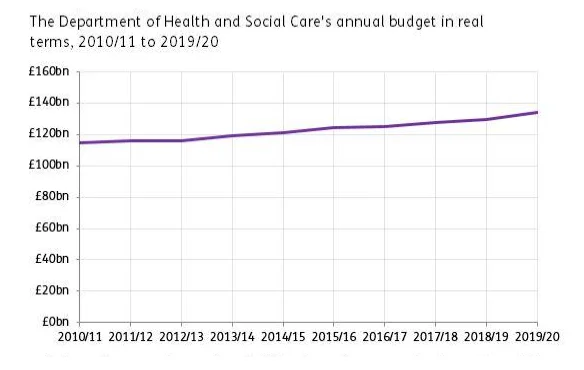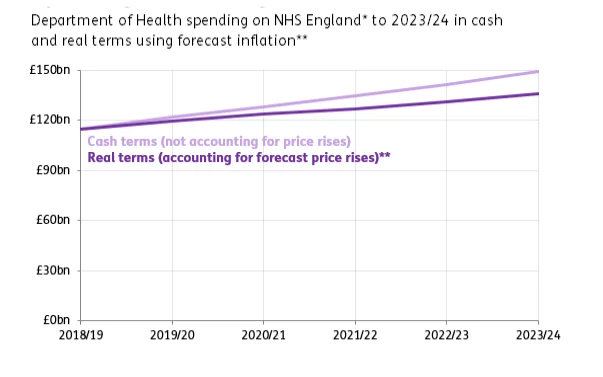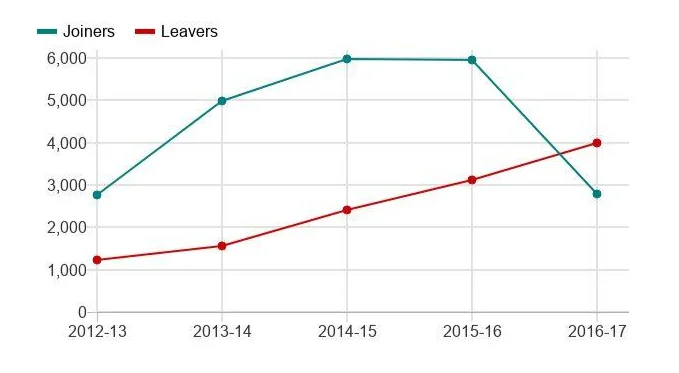Healthcare Resource Scarcity in the UK
Introduction
Over the past few years, serious efforts have been made in the United Kingdom and other countries to achieve a more rational distribution of healthcare resources. Regrettably, the truth is that the problem is even more intricate. Furthermore, these are not native British problem; problems in assigning limited healthcare resources seem to happen internationally. The report will majorly focus on analysing the issue of scarcity in the healthcare sector in the UK. It will further provide information about the influencing factors that are increasing the issue of scarcity in healthcare. The study is hereby effective to identify the issue of resource scarcity at NSH and analyse the existing practice and strategic to tackle the issue for maximising the quality of care.
Resources required and its scarcity issue
The major resources required in the NHS for delivering high quality health care services to each patient are such as materials, personnel, facilities and funds. These are the major resources which are mandatory for the NHS to allocate in different departments and ensure high quality health care service delivery to the patients of the UK. Resource scarcity is one of the major issues of the organisation which would deteriorate the quality of health care service in future. On the other hand, the consumption for the NHS services is increasing at a rapid rate due to high percentage of patients suffering from different diseases. The people in the UK rely on the health and social care services of the NHS and it is a publically funded organisation and responsible to support the social communities.


As per the above figure, the consumption of health care goods and services is increasing at rapid rate and it is high time for the economists of the UK and the authority of NHS to control the resources and reallocate it efficiently for mitigating the issue of resource scarcity. In order to handle the issue of scarcity of resources, it is mandatory to improve economic resource scarcity management and apply all the strategies and policies to make the resources available in the NHS and improve the efficiency of the organisation to maximise health care and wellbeing of the individuals across the UK.

As per the figure above, the budgeting in NHS is increasing at very low pace and it is difficult for NHS to cover the patients with proper care and services. It further raises the issue of resource scarcity where he NHS suffers from managing capital for further investment as per the budgetary plan. Hence, funds shortage is the major issue at NHS. On the other hand, the figure below also reveals that, it is expected to increase the budgetary plan at NHS, but the authority suffers from resource scarcity which will further deteriorate the quality of health care services in future.

Figure 4 explores that, there exists resource scarcity in terms of lack of skilled workforce at NHS. For delivering high quality health and social care services to the patients, it is mandatory for the NHS to increase staff retention policies ad practice. As per the figure, there is very low numbers of staff recruited in the NHS which is one of the major issue related to staff scarcity, for which NHS cannot provide high quality health care services and treatment to the patients due to lack of clinical expertise as well as poor staff retention.

As per the figure below, staff turnover rate at NSH is increasing over the years including the EU members and also non-EU members. It is another major issue, where the authority fails to manage the staff members including doctors, physicians, surgeons, nurses and social workers to meet the patient’s requirements. This is also a major issue related to resource scarcity about lack of experienced staff at NHS.

The figure below also reveals that the EU nurses start leaving NHS after the incident of Brexit and it also has serious impacts on the resource scarcity issue at the NHS. The NHS authority fails to hire the EU nurses and thus the recruitment becomes downward. On the other hand, the present EU nurses and doctors at NHS also start leaving the institution which further increases the issue of resource scarcity.

As per the analysis and data findings above, it can be revealed that, there is the issue of resource scarcity, due to poor funding and management of the financial planning at the NHS. Apart from that, lack of clinical experts at the NHS as well as poor retention of the staff members at the institution are the major issues for which there is lack of staff members at the NHS to support the patients with high quality treatment and care. It is mandatory for the NHS to strategise their planning for mitigating the above mentioned issue of resource scarcity which will provide a scope to the NHS to maximise its quality and reallocate the resources efficiently for better performance and maximising wellbeing of the individuals across the UK by delivering high quality treatment and health care services.
Strategies to tackle resource scarcity
Controls on demand:
Healthcare organisations are facing various challenges like limitless demands, cumulative costs and supply deficiency. Disorganizations in the distribution of healthcare amenities, supplier persuaded demand and incorrect uses of affluent technologies are the central causes of intensifying health care costs (Morgan et al. 2017). It is extremely crucial to get the finest worth for money due to the scarcity of health care resources; hence policymakers and bureaucrats have to apply the approaches like priority setting and rationing and should capitalize in more reasonable, operative, patient-centred and non-toxic services that offer the finest health products. The demand for high-quality care is increasing day by day and the healthcare sector is able to fulfil the demand of patients due to numerous reasons. Some evidence stated that the aspects that affect the demand in healthcare have to be well-demarcated to recognise the notion of demand in healthcare (Folland et al. 2017). However, price, consumer, income, government influence and supply are some of the factors that influence the demand in the healthcare sector. Healthcare is dissimilar from other services as it is not demarcated. In most businesses, goods and services can be standardised to improve efficacy and excellence.
Priority setting and rationing:
In the United Kingdom, a gap exists amongst the population’s necessity for health care and accessible resources. These countries have tried to eradicate or diminish the gap through actions like cultivating efficiencies and narrowing accountabilities. Rationing is the distribution of limited resources which in healthcare essentially involves withholding possibly helpful actions from certain individuals (Barasa et al. 2015). Demand is a tough perception in health market as individuals do not typically want to consume healthcare as an alternative what they need is decent health. Consumers will consequently select goods and services based on their capability to recover their health. The major goal of rationing is to progress agreement on exactly how to suitably make choices on using health care services more resourcefully and logically for the benefits of individual patients and the broader people. However, professionals believe that it is necessary to conserve and allocate health care resources (Hall et al. 2018). Every country places restrictions on entrée to health care decides on how to assign presented resources most effectively.
Application of economic principles to priority setting
The fundamentals of economics depend on the essential idea of demand and supply. In a secluded marketplace, demand and supply are controlled by using price and expenses. In the setting of healthcare where marketplace tragedy is detected, demand and supply cannot be merely controlled; consequently, there is a virtuous situation for management intercession. Though administration involvement does not remove shortage and there are still frequently not satisfactory capitals to fulfil all the wants and demand of a people (Hall et al. 2018). Hence, the economic principle of opportunity cost and marginal study that lie beneath-market require adaption to be used to support public sector choice-maker in defining how superlative to maximise safety or advantage. The belief of opportunity cost is resulting from the concept that when enclose to make selections above inadequate capitals, certain opportunities will be taken up whilst others should be undergone. Furthermore, funds should be organized in such a manner as to maximise profit for a given of resources input and attain a similar level of advantage for a decrease in the number of resources. Hence the use of economics in healthcare priority background turns out to be about attaining well-organised stability of services and capitalizing in the blend that realises the best results from the available capital.
Program budgeting and marginal analysis as an economic structure
Program budgeting and marginal analysis is an outline that has been used to initiate the financial philosophies of opportunity cost and marginal analysis while at the similar time allowing for different health structure objectives like equity (Wildavsky 2017). This framework includes measuring the cost and welfares of planned changes in the distribution of healthcare. Resources can be acquired by being more strictly well-organised or more efficient. All of this can occur at the margin by allowing for the number of various services offered. However, some author argues that the framework has been influenced by some limitations like how organisational culture obstacle to unambiguous priority setting activity should be handled; due to this limitation author has suggested further research to inspect what comes about in practise when these ways are used for priority setting (Smith et al. 2016). Regulating the delivery of health care amenities, employees, or tools is one more way of distributing health care resources. It is also necessary to develop effective health plans to deal with the issue of scarce resources. Setting appropriate budgetary plan and reallocating the available resources efficiently in new financial year are effective for NHS to support the patient with proper resources and skilled workforce. Marginal analysis of economics is also effective for handling the issue of resource scarcity, where the authority of NHS would be able to utilise the resources for extra unit of services which would beneficial for the social communities.
Cost-benefit analysis
Cost-benefit analysis has been used as an instrument for dealing with the matters of efficacy in the distribution of limited health resources. It is a process of evaluating the relative costs as well as health gain of diverse health interference (Newcomer et al. 2015). It helps to recognise the ignored chance by showing interference that is comparatively low-priced, yet have the possible strength to decrease the sickness burden considerably. The analysis is effective ads it helps to recognise the method to forward resource's to achieve more (Muennig and Bounthavong 2016). It demonstrates not only the usefulness of assigning resources from unproductive to effectual intervention but also the usefulness of assigning resources from less to additional cost-efficient intervention. NHS should focus on the cost benefit analysis and utilise the organisational infrastructure and available resources efficiently to treat the children as a whole. Attending the patients, treating a huge numbers of patients as a whole within the integrated system structure, hiring the nurses and staff members for the patients as a whole as well as restructuring the medical team for collaborative working practice are the major strategic of NHS which would be able to reduce the cost of treatment and maximise the efficiently of the nurses and doctors to support the social communities at lower cost.

Conclusion
The existing health associations are not able to fulfil the unlimited demand of consumers. The report revealed that the two principles are highly effective in addressing the issue including opportunity cost and marginal cost. Cost-effective analysis can be used to deal with the issue of scarcity in healthcare. Some evidence also revealed that rationing can be used to allocate resources in healthcare. Furthermore, these economic principles are highly effective in dealing with scarcity in healthcare in the UK. The above analysis also revealed that the healthcare professional must understand the demand in the healthcare system. These principles also help healthcare professionals to make effective policies for dealing with scarce resources in healthcare.
References
Barasa, E.W., Molyneux, S., English, M. and Cleary, S., 2015. Setting healthcare priorities at the macro and meso levels: a framework for evaluation. International journal of health policy and management, 4(11), p.719.
Barasa, E.W., Molyneux, S., English, M. and Cleary, S., 2015. Setting healthcare priorities at the macro and meso levels: a framework for evaluation. International journal of health policy and management, 4(11), p.719.
Hall, W., Williams, I., Smith, N., Gold, M., Coast, J., Kapiriri, L., Danis, M. and Mitton, C., 2018. Past, present and future challenges in health care priority setting: findings from an international expert survey. Journal of health organization and management, 32(3), pp.444-462.
Morgan, P., Himmerick, K.A., Leach, B., Dieter, P. and Everett, C., 2017. Scarcity of primary care positions may divert physician assistants into specialty practice. Medical Care Research and Review, 74(1), pp.109-122.
Newcomer, K.E., Hatry, H.P. and Wholey, J.S., 2015. Cost-effectiveness and cost-benefit analysis. Handbook of practical program evaluation, p.636.
Smith, N., Mitton, C., Hall, W., Bryan, S., Donaldson, C., Peacock, S., Gibson, J.L. and Urquhart, B., 2016. High performance in healthcare priority setting and resource allocation: A literature-and case study-based framework in the Canadian context. Social science & medicine, 162, pp.185-192.
Smith, N., Mitton, C., Hall, W., Bryan, S., Donaldson, C., Peacock, S., Gibson, J.L. and Urquhart, B., 2016. High performance in healthcare priority setting and resource allocation: A literature-and case study-based framework in the Canadian context. Social science & medicine, 162, pp.185-192.
- 24/7 Customer Support
- 100% Customer Satisfaction
- No Privacy Violation
- Quick Services
- Subject Experts



